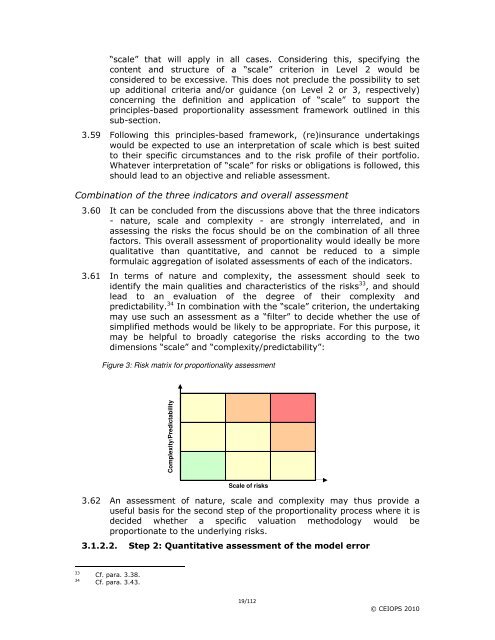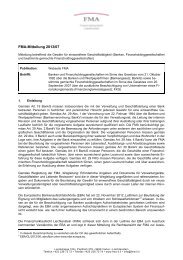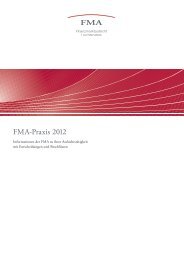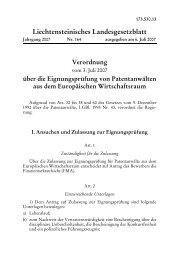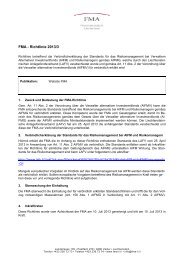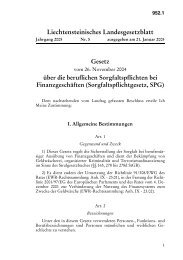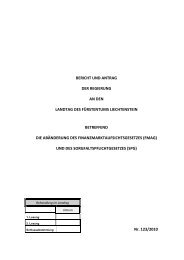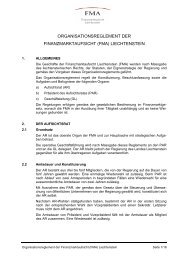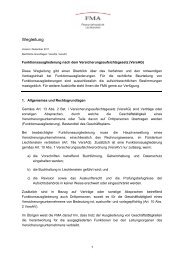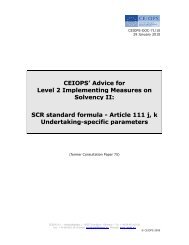CEIOPS' Advice for Level 2 Implementing ... - EIOPA - Europa
CEIOPS' Advice for Level 2 Implementing ... - EIOPA - Europa
CEIOPS' Advice for Level 2 Implementing ... - EIOPA - Europa
Create successful ePaper yourself
Turn your PDF publications into a flip-book with our unique Google optimized e-Paper software.
“scale” that will apply in all cases. Considering this, specifying the<br />
content and structure of a “scale” criterion in <strong>Level</strong> 2 would be<br />
considered to be excessive. This does not preclude the possibility to set<br />
up additional criteria and/or guidance (on <strong>Level</strong> 2 or 3, respectively)<br />
concerning the definition and application of “scale” to support the<br />
principles-based proportionality assessment framework outlined in this<br />
sub-section.<br />
3.59 Following this principles-based framework, (re)insurance undertakings<br />
would be expected to use an interpretation of scale which is best suited<br />
to their specific circumstances and to the risk profile of their portfolio.<br />
Whatever interpretation of “scale” <strong>for</strong> risks or obligations is followed, this<br />
should lead to an objective and reliable assessment.<br />
Combination of the three indicators and overall assessment<br />
3.60 It can be concluded from the discussions above that the three indicators<br />
- nature, scale and complexity - are strongly interrelated, and in<br />
assessing the risks the focus should be on the combination of all three<br />
factors. This overall assessment of proportionality would ideally be more<br />
qualitative than quantitative, and cannot be reduced to a simple<br />
<strong>for</strong>mulaic aggregation of isolated assessments of each of the indicators.<br />
3.61 In terms of nature and complexity, the assessment should seek to<br />
identify the main qualities and characteristics of the risks 33 , and should<br />
lead to an evaluation of the degree of their complexity and<br />
predictability. 34 In combination with the “scale” criterion, the undertaking<br />
may use such an assessment as a “filter” to decide whether the use of<br />
simplified methods would be likely to be appropriate. For this purpose, it<br />
may be helpful to broadly categorise the risks according to the two<br />
dimensions “scale” and “complexity/predictability”:<br />
Figure 3: Risk matrix <strong>for</strong> proportionality assessment<br />
Complexity/Predictability<br />
Scale of risks<br />
3.62 An assessment of nature, scale and complexity may thus provide a<br />
useful basis <strong>for</strong> the second step of the proportionality process where it is<br />
decided whether a specific valuation methodology would be<br />
proportionate to the underlying risks.<br />
3.1.2.2. Step 2: Quantitative assessment of the model error<br />
33 Cf. para. 3.38.<br />
34 Cf. para. 3.43.<br />
19/112<br />
© CEIOPS 2010


